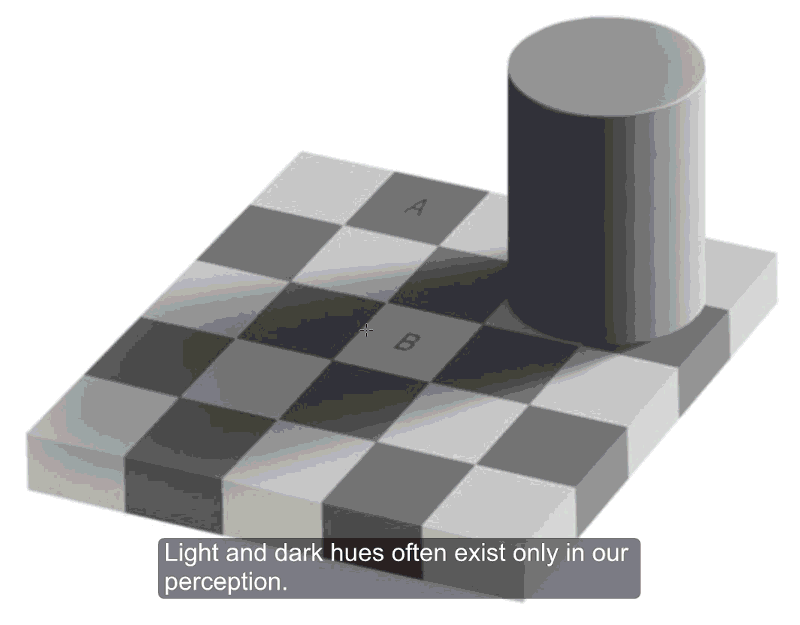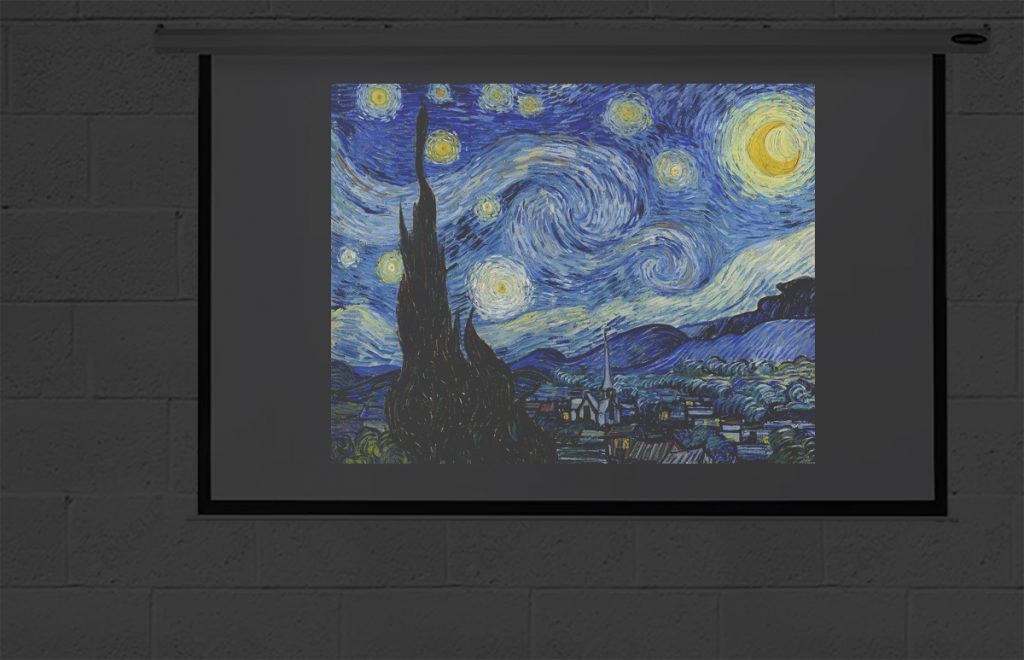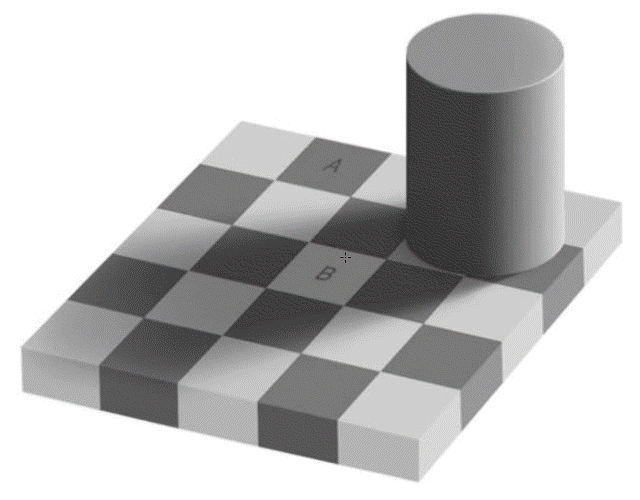Video transcript:
Let’s start out with a projection screen.
Could we dim the lights, please?
Thank you.
Let’s look at a projection.
This is The Starry Night, by Vincent Van Gogh, 1889. Maybe you have heard of it.
Excuse me, it’s still a little bright in here. Could we close the blinds?
Thank you.
Let’s take a close look at this painting.
Specifically, the black outlines of these hills.
I do this in the classroom. I point at a detail like this and ask, “What color is this?”
The answer is of course, black.
I then point at the screen outside of the projected image. “What color is this?”
Everyone agrees that it’s white. They KNOW the screen is white.
“How about the wall over here?”
That’s white too.
Let’s capture samples of the white screen and the white wall, and compare them to the outline of the hills.
And let’s remove that yellow border.
There isn’t any black in this image that is darker than the screen itself or the wall around it.
We perceive the black areas as black because locally, within the image, they are the darkest.
When we turn our mental attention to the space outside of the slide, we switch to a different frame of reference.
When we open the blinds and let a little more light into the room, we still read the outlines of the hills as black, even though they get a little lighter.
With even more light in the room, we can still identify blacks and whites in the image.
The visual memory of black vs. white stays with us even when we advance to a “black” slide, in effect turning the projector off.
We remember parts of the image as having been black, even while we are staring at what we know is a poorly-lit white screen.
Here’s another example of this phenomenon.
This is a fairly common optical illusion: Checker Shadow Illusion, avilable on Wikipedia under a creative commons license.
Let’s see how White-Square-B compares to Black-Square-A.
They are exactly the same shade of gray.
We perceive them as being opposites because of the other, local clues that we are reading.
The cylinder is casting a shadow on the board, and Square B is surrounded by darker squares.
Let’s scribble all over this image with color sampled directly from Square B.
When we destroy the local context, the illusion is broken.
A tremendous amount of how we see light and dark is inside the visual part of our brains.
This video was made by Matt Kizer for
Matt Kizer Design.
https://scenicandlighting.com/
The music used in this video is “Loopster” by
Kevin MacLeod (incompetech.com)
Music licensed under Creative Commons: By Attribution 3.0
http://creativecommons.org/licenses/by/3.0/
© 2019 Matt Kizer and Matt Kizer Design LLC. All rights reserved.


